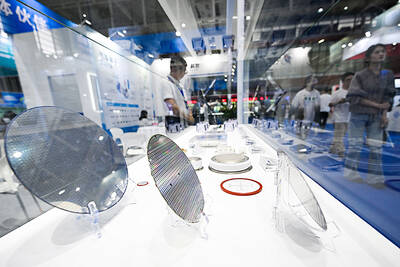Facebook Inc’s penetration rate in Taiwan is higher than in any other market in the world, an executive of the world’s largest social network said yesterday.
Facebook director for North Asia Jayne Leung (梁幼莓) told a press briefing that the number of active Facebook users in Taiwan reached 15 million per month in the fourth quarter of last year, representing about 65 percent penetration among the country’s population and edging out Hong Kong’s 61 percent for the top spot.
Taiwan had a Facebook penetration rate of about 60 percent in the second quarter of last year, when it was ranked top in Asia, according to Facebook data.
The number of daily users in Taiwan also reached 11 million during the fourth quarter, up 10 percent from the second quarter, while active daily mobile users increased by 20 percent to 8.5 million, Leung said.
Facebook did not give Taiwan user statistics for the third quarter.
“Taiwan is a very healthy market for us and we have seen huge growth here in the mobile segment,” Leung said.
Facebook plans to hire more sales and marketing staff in its North Asia offices this year to serve advertisers in key vertical industries, such as e-commerce, fast-moving consumer goods, telecommunications, tourism and finance, she said.
The social network will also add a new advertisement reseller in Taiwan to seek more business opportunities from mobile ads, Leung said.
In the fourth quarter of last year, Facebook’s mobile ad revenue accounted for 53 percent of its overall revenue, reaching US$1.25 billion, higher than the company’s total revenue in the same period of 2012.
Its mobile-only monthly active users amounted to 296 million during the October-to-December period of last year, nearly doubling the 157 million in the year-earlier period, according to Facebook data.

The demise of the coal industry left the US’ Appalachian region in tatters, with lost jobs, spoiled water and countless kilometers of abandoned underground mines. Now entrepreneurs are eyeing the rural region with ambitious visions to rebuild its economy by converting old mines into solar power systems and data centers that could help fuel the increasing power demands of the artificial intelligence (AI) boom. One such project is underway by a non-profit team calling itself Energy DELTA (Discovery, Education, Learning and Technology Accelerator) Lab, which is looking to develop energy sources on about 26,305 hectares of old coal land in

Taiwan’s exports soared 56 percent year-on-year to an all-time high of US$64.05 billion last month, propelled by surging global demand for artificial intelligence (AI), high-performance computing and cloud service infrastructure, the Ministry of Finance said yesterday. Department of Statistics Director-General Beatrice Tsai (蔡美娜) called the figure an unexpected upside surprise, citing a wave of technology orders from overseas customers alongside the usual year-end shopping season for technology products. Growth is likely to remain strong this month, she said, projecting a 40 percent to 45 percent expansion on an annual basis. The outperformance could prompt the Directorate-General of Budget, Accounting and

Netflix on Friday faced fierce criticism over its blockbuster deal to acquire Warner Bros Discovery. The streaming giant is already viewed as a pariah in some Hollywood circles, largely due to its reluctance to release content in theaters and its disruption of traditional industry practices. As Netflix emerged as the likely winning bidder for Warner Bros — the studio behind Casablanca, the Harry Potter movies and Friends — Hollywood’s elite launched an aggressive campaign against the acquisition. Titanic director James Cameron called the buyout a “disaster,” while a group of prominent producers are lobbying US Congress to oppose the deal,

Two Chinese chipmakers are attracting strong retail investor demand, buoyed by industry peer Moore Threads Technology Co’s (摩爾線程) stellar debut. The retail portion of MetaX Integrated Circuits (Shanghai) Co’s (上海沐曦) upcoming initial public offering (IPO) was 2,986 times oversubscribed on Friday, according to a filing. Meanwhile, Beijing Onmicro Electronics Co (北京昂瑞微), which makes radio frequency chips, was 2,899 times oversubscribed on Friday, its filing showed. The bids coincided with Moore Threads’ trading debut, which surged 425 percent on Friday after raising 8 billion yuan (US$1.13 billion) on bets that the company could emerge as a viable local competitor to Nvidia